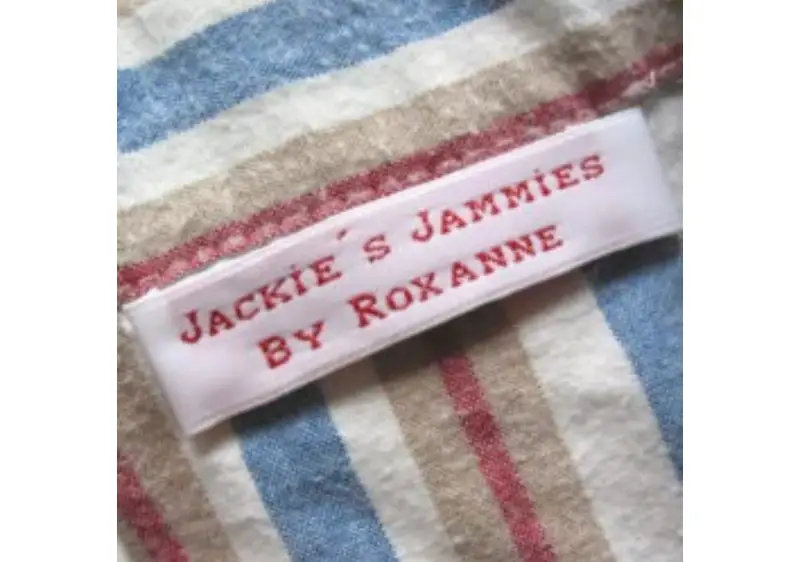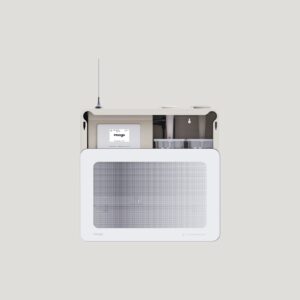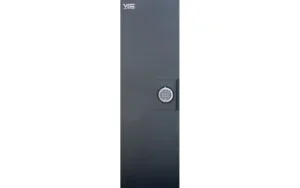Maximize Convenience: Clothing Tags for Nursing Homes
In the realm of nursing home care, where efficiency, comfort, and dignity are paramount, the role of clothing tags cannot be overstated. As facilities strive to provide optimal care for their residents, maximizing convenience becomes a pivotal objective. Clothing tags for nursing homes serve as a fundamental tool in achieving this goal, offering a systematic approach to wardrobe management that enhances efficiency, ensures comfort, and upholds the dignity of residents. In this discourse, we delve into the multifaceted benefits and innovative applications of clothing tags in nursing home settings, exploring how they streamline care, personalize solutions, and empower both residents and caregivers alike.
Streamlining Care: The Role Of Clothing Tags For Nursing Homes Efficiency
Efficiency lies at the heart of nursing home operations, where caregivers strive to optimize their workflow to deliver prompt and effective care. Clothing tags for nursing homes play a crucial role in streamlining this process by providing a standardized system for identifying, organizing, and managing residents’ clothing. By implementing efficient tagging protocols, caregivers can swiftly locate and retrieve garments, minimizing time spent on mundane tasks and redirecting their focus towards resident care. Moreover, clothing tags facilitate seamless communication among staff members, ensuring that pertinent information such as sizing, preferences, and special instructions are readily accessible, thus enhancing overall operational efficiency within the facility.

Personalized Solutions: Custom Clothing Tags For Nursing Homes Comfort
The comfort of nursing home residents is of paramount importance, and personalized solutions are key to meeting their individual needs and preferences. Custom clothing tags for nursing homes offer a tailored approach to wardrobe management, allowing caregivers to cater to the unique requirements of each resident. Whether it be identifying adaptive clothing for individuals with mobility issues or indicating fabric preferences for those with sensitive skin, personalized tags enhance comfort and promote a sense of well-being among residents. Additionally, by incorporating elements such as color-coded tags or tactile identifiers, caregivers can facilitate greater independence and autonomy, empowering residents to make choices that align with their comfort and personal style.
Ensuring Dignity: The Importance Of Clothing Tags For Nursing Homes Settings
Maintaining the dignity of nursing home residents is fundamental to fostering a supportive and respectful environment. Clothing tags for nursing homes play a significant role in upholding this principle by affording residents a sense of autonomy and identity in their wardrobe choices. By labeling garments with personalized tags bearing their name or initials, residents are empowered to assert their individuality and maintain a sense of ownership over their clothing. Furthermore, clothing tags help mitigate the risk of misplaced or misidentified garments, preventing potential embarrassment or discomfort for residents. In essence, by recognizing the importance of clothing tags for nursing homes in preserving dignity, nursing homes can cultivate a culture of respect and inclusivity that enriches the lives of residents.
Empowering Residents Through Clothing Tags For Nursing Homes
Empowerment lies at the core of effective caregiving, and clothing tags for nursing homes serve as a tool for empowering nursing home residents to maintain control over their personal belongings and appearance. By involving residents in the tagging process—whether through selecting tag designs, providing input on labeling preferences, or participating in organizing their wardrobe—caregivers foster a sense of agency and self-expression among residents. Moreover, clothing tags for nursing homes serve as a visual reminder of residents’ autonomy and individuality, reinforcing their sense of identity within the community. Through this collaborative approach to wardrobe management, residents are empowered to make choices that reflect their personality, preferences, and cultural background, thereby enhancing their overall sense of well-being and satisfaction.
Innovations In Clothing Tags For Nursing Homes Management
The landscape of nursing home management is continually evolving, driven by advancements in technology and a growing emphasis on person-centered care. Innovations in clothing tags for nursing homes represent a significant stride towards enhancing efficiency, improving resident comfort, and optimizing workflow within nursing home settings. From RFID-enabled tags that automate inventory tracking to antimicrobial labels that promote hygiene and safety, these technological innovations offer practical solutions to longstanding challenges in wardrobe management. Moreover, the integration of digital platforms and mobile applications enables caregivers to access real-time information, communicate effectively, and tailor care plans to meet the unique needs of each resident. By embracing these innovative solutions, nursing homes can elevate the standard of care and enhance the overall quality of life for residents.
Streamlining Wardrobe Management With Clothing Tags For Nursing Homes
Wardrobe management is a complex and time-consuming task in nursing home settings, requiring careful coordination and organization to meet the diverse needs of residents. Clothing tags for nursing homes serve as a foundational tool in streamlining this process, offering a systematic approach to inventory management, garment identification, and care coordination. By implementing standardized tagging protocols and utilizing intuitive labeling systems, caregivers can optimize the efficiency of wardrobe management operations, reducing the risk of errors, loss, and confusion. Additionally, clothing tags facilitate communication among staff members, enabling seamless collaboration and ensuring that residents’ clothing preferences and special requirements are consistently met. Through the strategic integration of clothing tags into existing workflows, nursing homes can streamline wardrobe management processes and enhance the overall quality of care for residents.
The Benefits Of Clothing Tags Designed For Nursing Home Residents
Clothing tags for nursing homes designed specifically for nursing home residents offer a host of benefits that contribute to their overall well-being and quality of life. By providing a clear and organized system for identifying and managing garments, these tags promote independence, autonomy, and dignity among residents. Additionally, personalized tags tailored to individual preferences enhance comfort and satisfaction, while innovative features such as color-coding and tactile identifiers improve accessibility and ease of use. Moreover, clothing tags for nursing homes streamline communication among caregivers, ensuring that resident needs are promptly addressed and preferences are consistently honored. Ultimately, by recognizing and embracing the benefits of clothing tags designed for nursing home residents, facilities can enhance the quality of care, promote resident empowerment, and foster a supportive and inclusive environment for all.
Conclusion
In conclusion, clothing tags represent a fundamental tool in maximizing convenience, efficiency, and comfort within nursing home settings. By streamlining wardrobe management processes, personalized solutions, and upholding the dignity of residents, clothing tags for nursing homes play a pivotal role in enhancing the quality of care and promoting resident well-being. Through innovative applications and collaborative approaches to wardrobe management, nursing homes can empower residents, streamline operations, and cultivate a culture of respect and inclusivity. As the landscape of nursing home care continues to evolve, the role of clothing tags remains indispensable in shaping the future of resident-centered care.

Fran Peters is a dedicated writer specializing in health and medical content. With a background in healthcare and a passion for helping others lead healthier lives, Fran brings a wealth of knowledge and expertise to her writing.














Post Comment